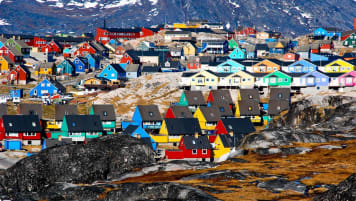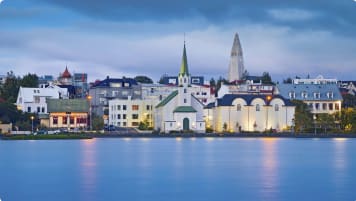Viking Attacks on the Carolingian Empire
The Carolingian Empire was already established as the mightiest political power in Western Europe. This article provides background reading this fascinating Viking empire. An Antipodean travel company serving World Travellers since 1983 with small group educational tours for senior couples and mature solo travellers.
9 Feb 24 · 10 mins read
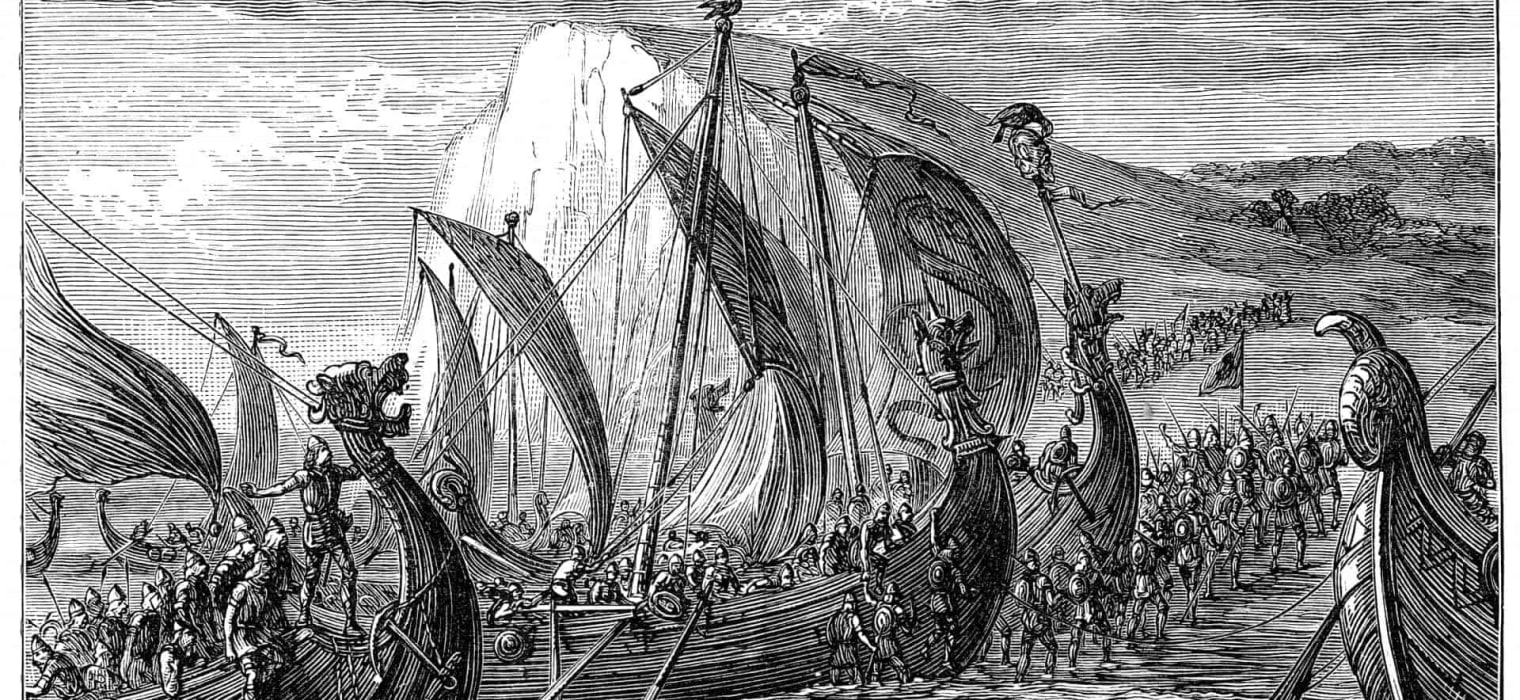
Vikings and the Carolingian Empire
When the Viking Age began in the late 700s, the Carolingian Empire was already established as the mightiest political power in Western Europe. Under Charlemagne, the Franks had expanded the kingdom in all directions, eventually stretching from Saxony to northern Italy. Now sharing a common frontier, you can’t blame the Scandinavian Vikings for thinking they might be the next Franks’ next target. So, they went out on the offensive. In three major stages, from the late 790s to the early 910s, the Vikings launched a series of attacks on the Carolingian Empire, evolving from quick hit and run raids, to more drawn-out attacks, until they eventually began to occupy the territories. In effect, these attacks undermined the Carolingian monarchy and established conditions for the emergence of feudal states in Europe in the 10th century
This article explores the three phases of Viking attacks on the Carolingian empire, from the 790s -830s, 830s – 865, and 878 – 911. It is intended as background reading for Odyssey Traveller’s small group Viking Tours for mature and senior travellers. Viking history and the lands of Viking settlements are explored during our:
- Tour in Scandinavia (13 days)
- Discover Greenland Small Group Tour (5 days)
- Faroe Islands Small Group Tour (5 days)
- Iceland Cultural and Wilderness Small Group tour (17 days)
- Vikings in Britain Small Group Tour (28 days)
Much of the information used in this article is extracted from Kenneth W. Harl’s The Vikings.

The First Phase (790 – 830s)
The first phase of Viking attacks came during the time of Charlemagne and his son Louis the Pious. They began as hit and run pirate raids along the north coast of France. Their longships were ideally suited to this purpose; with their shallow draughts, they were able to land on coastal locations and then row away as quickly as they had come. The earliest Viking raid was on the monastery of Noirmoutier at the mouth of the Loire River in 799.
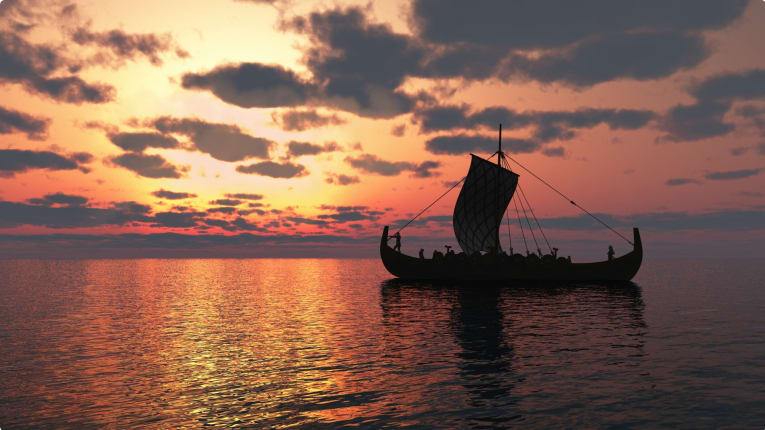
Monasteries were particularly targeted as they served as major economic centres in the Carolingian period. Villages were attached which were home to specialist craftsmen and peasants, who could be carried off and sold into slavery or used in Scandinavia. Captured abbots, as well as Christian relics, could also be ransomed for large amounts.
This initial phase also saw a clash between Charlemagne and Danish King Godfred. Although the Franks referred to him as a ‘king’, it is more accurate that he was a ruler in Denmark rather than of Denmark. Many Danes may have recognized his authority, but there were rival figures with their own halls even in the Jutland peninsula that makes up the bulk of modern Denmark. Nevertheless, he controlled the important trading town of Hedeby and was responsible for constructing the Dannevirke – fortifications on Denmark’s southern borders on the Eider River.
In 810, Godfred, with some two hundred Viking ships, carried out an attack against the undefended and exposed Frisian coastline on the north-western tip of the Carolingian Empire. He also threatened Dorestad, Northern Europe’s premier market city and jewel of the Carolinian Empire’s economic system. No Frankish king could afford to see that city threatened, and so Charlemagne countered with a threatened invasion of Denmark. Ultimately, he would make a treaty with Hemming, the murderer and successor of Godfred, in 810.
The clash convinced Charlemagne to build up naval defences to protect the ports along the Empire’s northern seaboard, stretching between the mouths of the Seine and the Rhine. These consisted of signal towers and fortified posts, while militia forces were also conscripted, and roads were built. All proved to be largely successful in avoiding further Viking attacks on the main ports.
It was impossible to stop the raid completely though. Viking forces were still able to beach their ships in an uninhabited area, perhaps set up a fortified camp, then move in and ravage the surrounding region or attack a monastery, then retreat to their ship or base. After raids they would hold big markets, where they would sell booty and slaves or ransom captives.
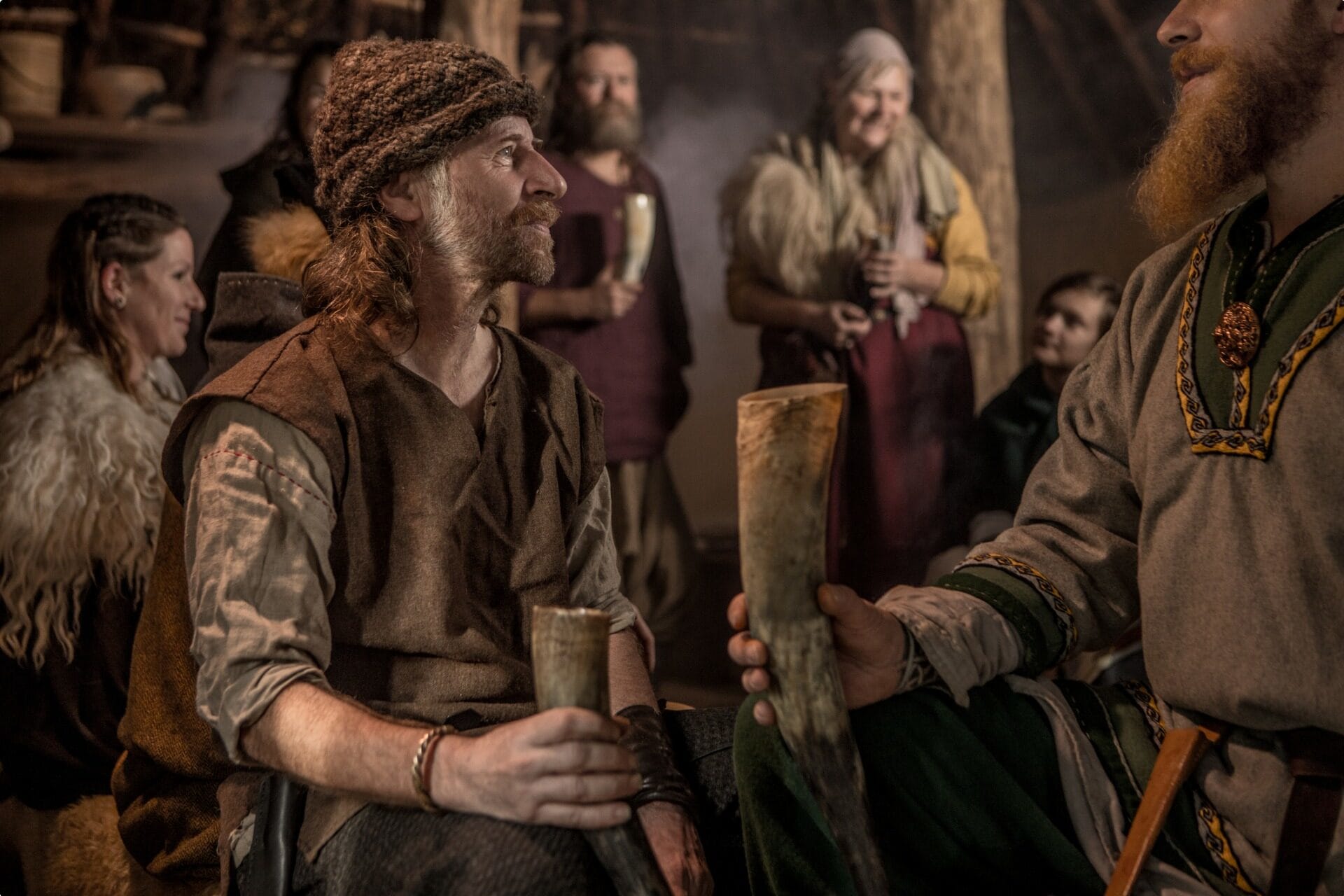
The Second Phase (830s – 865)
From the 820s, the sons of Louis the Pious began to compete over carving up the Carolingian Empire into independent states, rather than allow the eldest brother, Lothar (r. 840-855), to rule the empire as a whole. As the various vassals of the Carolingian Empire lined up behind the different sons of Louis, and royal interests and finances directed elsewhere, the naval defences were neglected. Further, the competing sons of Louis hired Vikings as their allies or mercenaries in some of their struggles.
As a result, a new phase of Viking attacks began in the 830s, with marked increase in the number, scope, and scale of the raids. The increase in attacks can be seen in the sacking of Dorestad every year between 834 and 837.
To defend the area around Dorestad and Frisia, Louis handed out a fief to a Danish sea king, Harald Klak. Harald would rule Frisia as a vassal of Louis if he could control the raids. Harald forestalled some raids, but he also gave information to Viking navigators and allowed Dorestad to be used as a convenient market for raiders to sell off their booty and plunder. Louis’s action only served to direct Viking raids farther down the coast to the Somme, Seine, Loire, and Rhône.
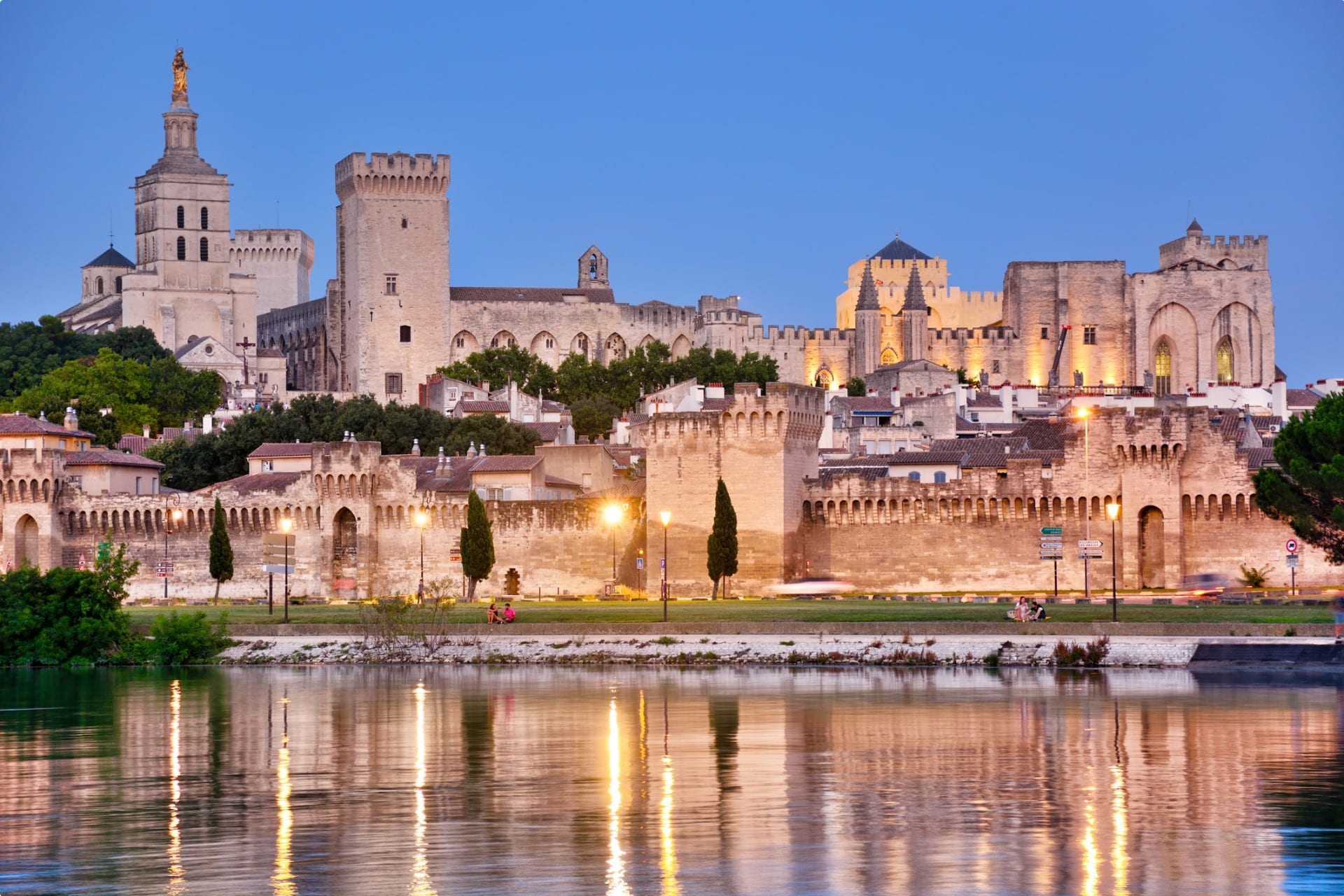
After Louis died, his three surviving sons divided up the Frankish Empire at the Treaty of Verdun of 843. West Francia (essentially France today) went to Charles the Bald, East Francia to Louis the German, and the middle part and Italy to Lothar. With the western third, Charles inherited the bulk of fighting with the Vikings. He lacked the money and manpower to meet the Viking threat effectively, however. Further, he had to devote much of his time to countering the ambitions of his brothers and their descendants.
By this time, the Vikings had acquired a great deal of knowledge about the Frankish Empire and superb skill in negotiating its river systems and understanding its political divisions. During this phase of attacks, the raiders became adept at traveling deep into the Frankish kingdom to areas which had previously been unscathed, attacking towns and extorting ransom or tribute. Further, there was a marked increase in both the size of the Viking war-bands and the number of fleets. Their types of attacks also changed from quick hit and run raids to longer, drawn-out attacks, as they began to winter on foreign soil instead of returning to Scandinavia each autumn.
As they spent longer periods on foreign soil, they became increasingly entangled in internal politics. One from which this took was the Vikings’ exploitation of internal political disputes to their own ends, either independently or in collusion with local rebel factions. Thus in the Frankish kingdoms, they capitalised on the internecine struggles between the Carolingian rulers by attacking while the royal host was elsewhere, or by joining forces with the king’s enemies.
Charles the Bald suffered several very embarrassing attacks during this phase. In 841, the Vikings sacked Rouen on the Seine; in 842, they sacked Quentowic near modern Étables, south of Boulogne; and in 843, they plundered Nantes on the Loire.
The most humiliating attack occurred in 845, when a large fleet of 120 Danish and Norwegian ships and 5000 raiders, commanded by the legendary Ragnar Lodbrok, sailed up the Seine and met an army of Charles the Bald. As Charles had divided his army into two parts, one for each side of the banks of the river, Ragnar attacked and defeated the smaller contingent. He then took 111 of the men as prisoners and hanged them in full view on an island on the Seine, causing the other half of the army to flee. After his victory, Ragnar and his crew sailed on to plunder and occupy Paris, causing Charles to pay them 7,000 pounds of silver to withdraw.
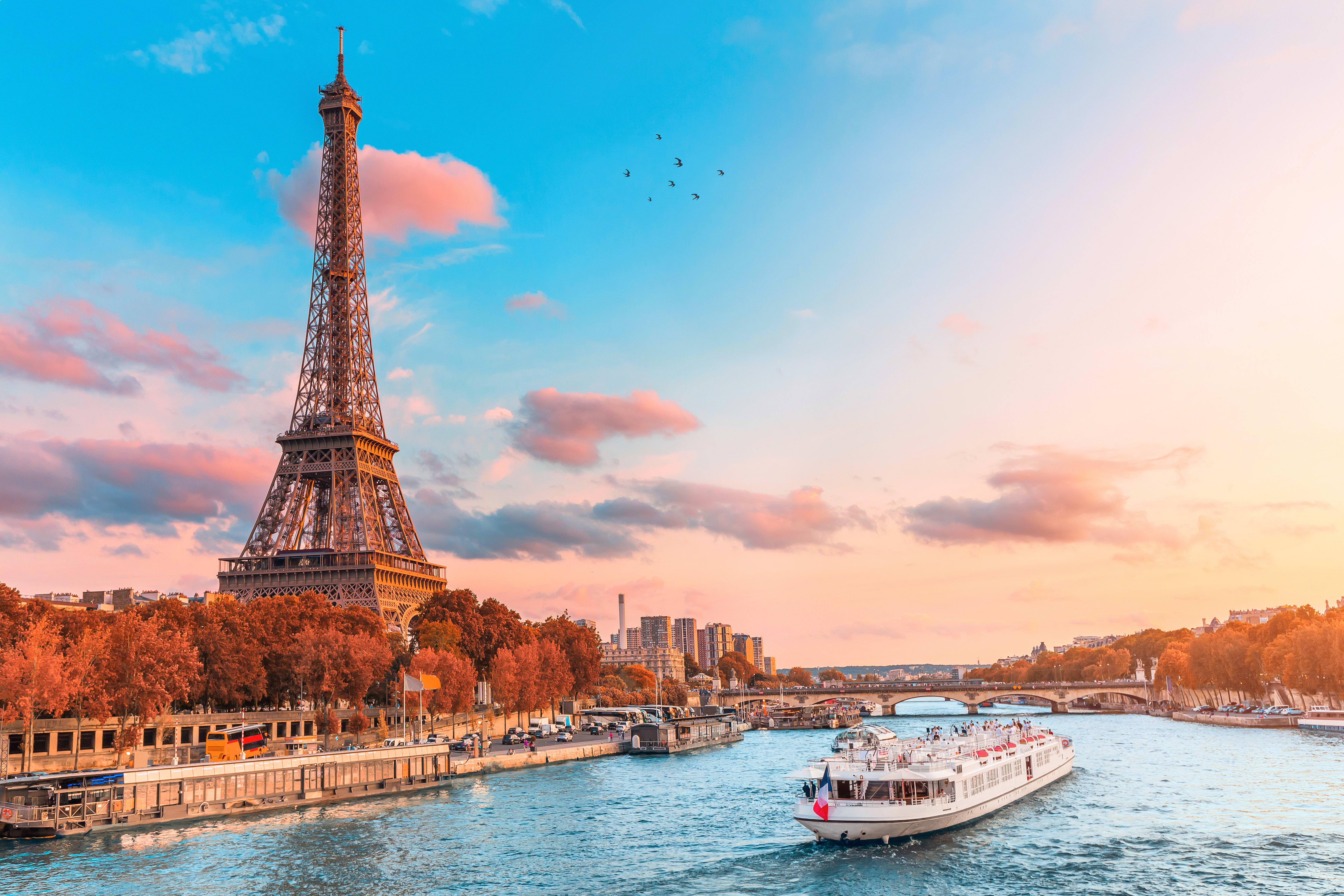
This was the first recorded payment of protection money known as Danegeld (“payments to the Danes”). It was followed by many more. Between the reign of Charles the Bald and his final descendant, Charles the Simple, at least 45,000 pounds of silver was reported to have been paid by the Franks to the Vikings. This represents probably only about one-third of the total that was paid out (120,000 pounds).
This put the Frankish monarchy in a tight position financially, and by the 860s and ’70s, it had serious difficulties in meeting bills. This was one reason behind the moves towards a Feudal system, as lands were handed over to vassals to defend attacks, with the monarchy unable to do so itself.
Ultimately, Charles the Bald spent most of his reign trying to counter multiple Viking attacks. By 850, Vikings were making their way up the Meuse, Seine, and Loire rivers, and no one was safe from their raids. They focused particularly on towns and villages along the Seine from 856 to 862, seizing Paris multiple times and pillaging Bayeux.
By 864, Charles had admitted that his reign was a failure, summoning the nobility and issuing a series of capitularies, or laws, known as the Edicts of Pîtres. The edicts specified that towns and cities should be fortified to protect them from invaders. Further, the nobility were required not to requisition horses and labour under the guise of fighting the Vikings. Indeed, by the 860s, a number of prominent vassals in the Frankish Empire were using Viking attacks as a means to consolidate regional control in their areas.
Ultimately, these laws were hard to enforce and served as little more than Charles’s wishes. Fortunately, though, he was to get a respite from the attacks in the next year, as most Vikings decided to move across to attack the British Isles instead. They went there following even greater loots, having depleted the spoils in the Frankish Empire for the time being.

The Third Phase (878-911)
Many of the same Vikings, along with new ones arriving from Scandinavia, returned to Europe in 878-879 for a new wave of attacks. One particular Viking force that had been fighting in England crossed the channel in 879 to seize and fortify Ghent. They then proceeded to ravage regions of what is today Holland and parts of western Germany – the heart of the Frankish Empire.
It wasn’t all humiliation for the Franks, though. In 881, Louis III, king of the western Franks, succeeded in intercepting and destroying one of the Viking columns. For the first time, a Carolingian king had had a victory over the Vikings.
That same year, Charles the Fat, ruler of the eastern Frankish kingdom, came to the throne. Over the next several years, he would reunite the old Carolingian Empire, the nobility of the Frankish kingdoms agreeing to unification in order to resist the renewed Viking attacks. It soon became apparent, however, that Charles was not up to the task of facing the Vikings. His strategy to enfeoff Frisia to a Viking Sea king, Godfried, for example, backfired terribly. As Godfried started to use it to assist other Vikings, Charles was forced to get rid of the Viking vassal.
His biggest failure, though, came in 1884-1885, when a Viking fleet of as many as 700 ships under the command of Siegfried sailed up the Seine and to besiege Paris. Defended by Count Odo, Paris managed to hold out for about 18 months. But when Charles raised a large army and rushed to Paris, he refused to fight the Vikings, instead providing them a danegeld payment of 7,000 pounds of silver and allowing them free reign to plunder Burgundy.
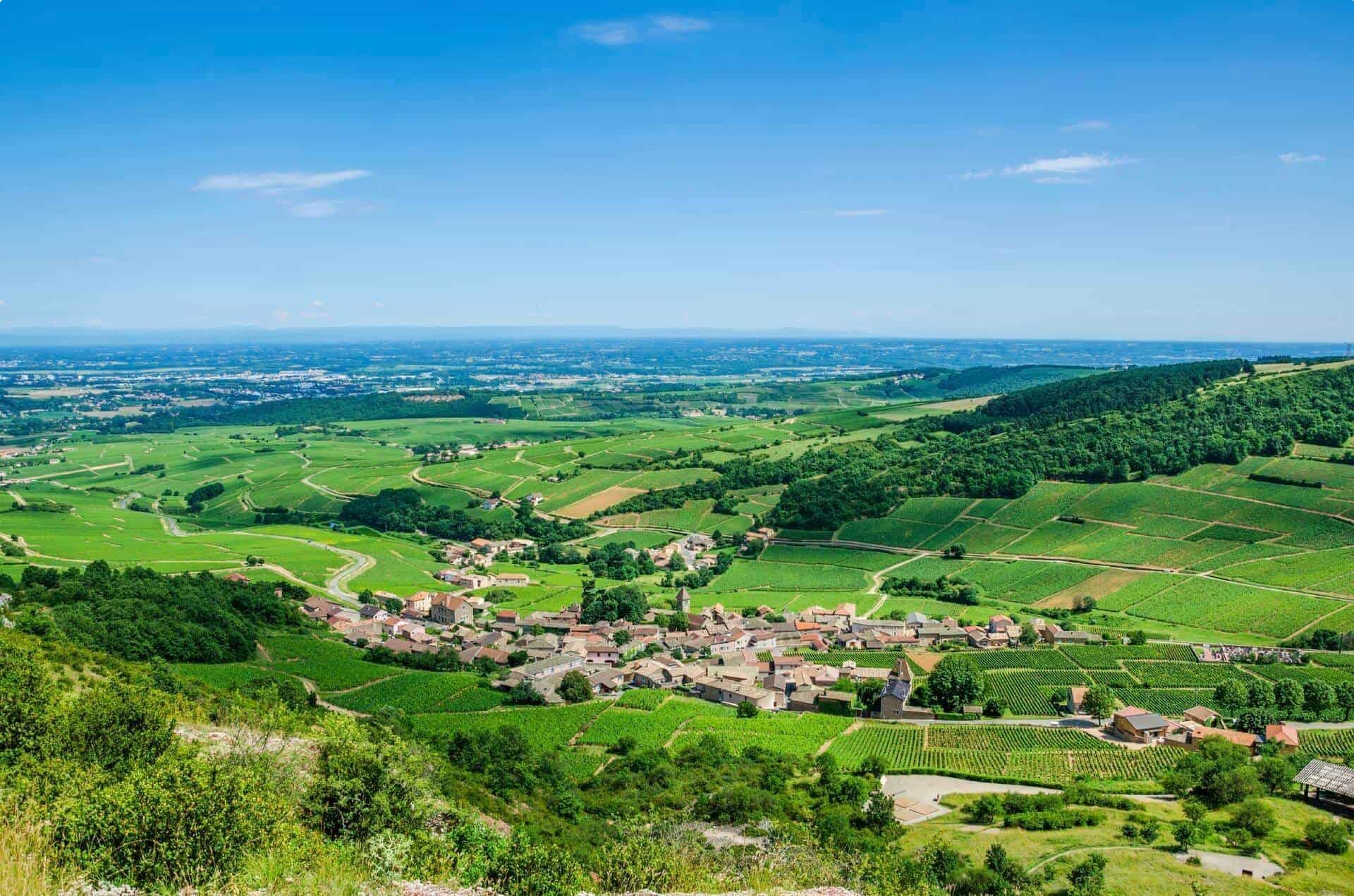
This episode tarnished the honour of Charles the Fat, ruining relations between him and his noble subjects. In the end, he was disposed by the Frankish nobility and confined to a monastery. With this, the Carolingian Empire was divided again, with Arnulf the Bastard elected to rule the eastern Frankish kingdom and Count Odo to rule the western kingdom.
Both kings found modest success in resisting the Vikings. Arnulf attacked a Viking camp on the Dyle River in 891, but the Vikings were able to withdraw to raid England. Odo, meanwhile, did not face any serious Viking attacks during his reign, and the situation seemed stable on his death in 897.
The wave continued from 895, as a new generation of Vikings emerged from Scandinavia. As they arrived, they encountered a politically divided and bankrupt Frankish Empire. When one Viking leader, the Danish sea king Hrolf (or Rollo), attacked Paris in 911, the monarchs no longer had the capacity to raise defensive forces or even pay danegeld. Instead, in exchange for freeing the city, Charles the Simple promised him a fiefdom in Normady in an attempt to transform into a Frankish vassal.
Charles’s strategy worked. Rollo accepted the fiefdom, converted his people to Christianity, and pledged allegiance to the king. It was in this way that the Vikings became the Normans. This would have major implications for halting Viking attacks into the Carolingian Empire, as well as laying the foundation for the evolution of feudal states.
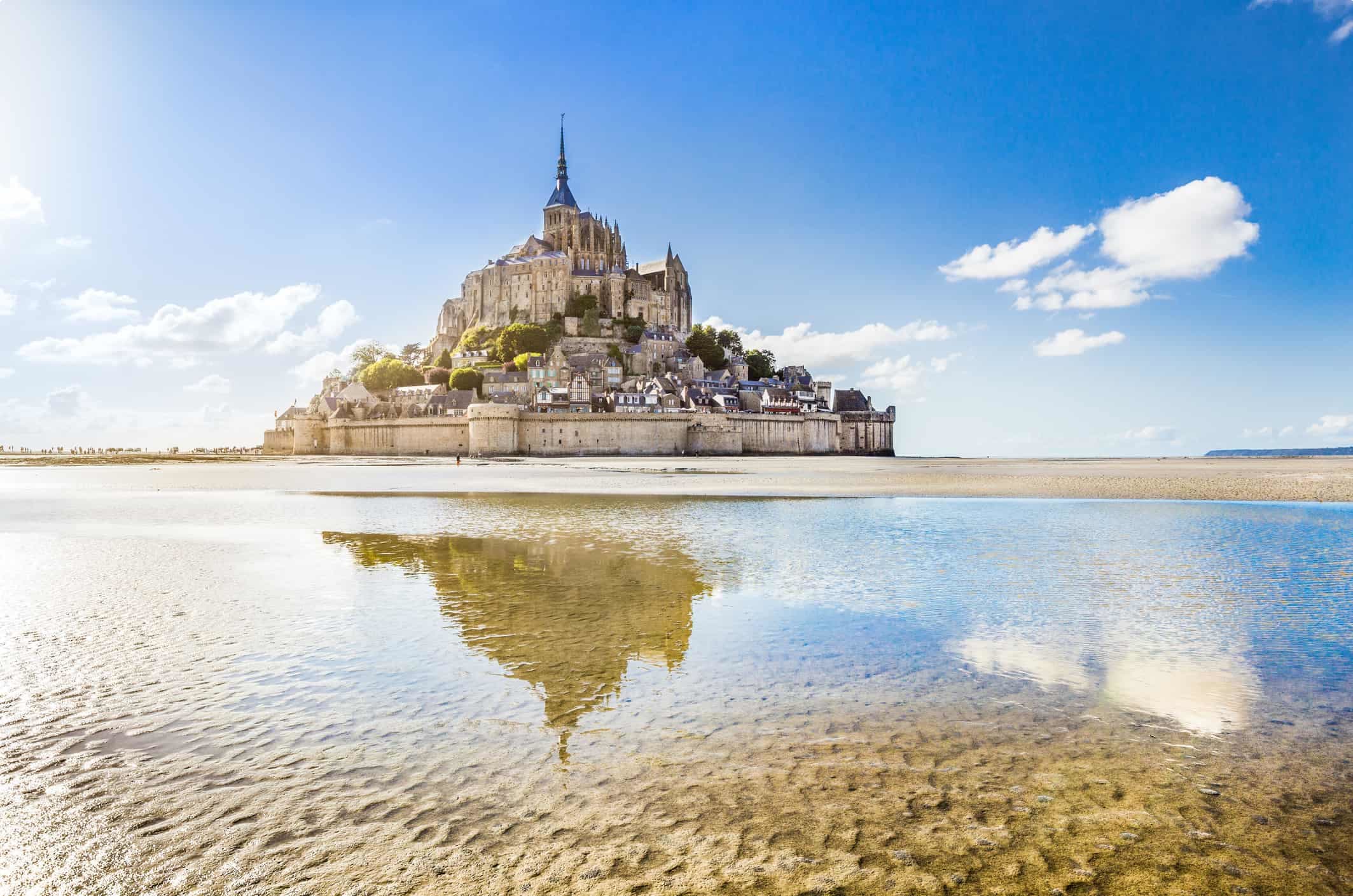
Scandinavia Viking Tour
During Odyssey Traveller 13-day tour in Scandinavia, we explore Denmark’s, Sweden’s’ and Norway’s ancient Viking heritage, World Heritage Sites, and charming Nordic cities, with some truly spectacular scenery along the way.
What these Scandinavian countries share in common is their natural beauty, and vibrant, unforgettable cultures. In low-lying Denmark, we visit meticulously maintained urban centres, including the vibrant capital of Copenhagen. We then continue our sightseeing tour and adventure in Sweden and its capital, Stockholm, now the financial capital of the region. Finally, after Sweden, we travel to Norway, famous for its breath-taking Norwegian coastal voyage favoured by tourists. Here, we journey over magnificent mountains and skirt picturesque fjords of Norway to reach Bergen.
Our Scandinavian tour also visits the Christiansborg Palace (outside visit), housing the Danish Parliament; the Vasa Museum; Vigeland Sculpture Park; and the old canal area, Nyhavn, with its picturesque houses and vessels and beautiful landscapes. This and more are all waiting to be explored on one of Odyssey’s small group tours of Denmark, Sweden, and Norway. Designed for the senior traveller, and led by experienced, and enthusiastic likeminded people.

We also explore Viking history during our tours in the lands of Viking settlements, including our:
- Discover Greenland Small Group Tour (5 days)
- Faroe Islands Small Group Tour (5 days)
- Iceland Cultural and Wilderness Small Group tour (17 days)
- Vikings in Britain Small Group Tour (28 days)
Odyssey Traveller has been serving global travellers since 1983 with educational tours of the history, culture, and architecture of our destinations designed for mature and senior travellers. We specialise in offering small group tours partnering with a local tour guide at each destination to provide a relaxed and comfortable pace and atmosphere that sets us apart from larger tour groups. Tours consist of small groups of between 6 and 12 people and are cost inclusive of all entrances, tipping and majority of meals. For more information, click here, and head to this page to make a booking.
Articles about Scandinavia published by Odyssey Traveller:
- Discovering Scandinavia & Viking Denmark for Tourists
- Photographing the Northern Lights
- Questions About Norway
- Exploring the Faroe Islands
- Questions About Sweden for Senior Travellers
External articles to assist you on your visit to Scandinavia:
- Where is Scandinavia? A Guide to the Scandinavian Countries
- Tips for Visiting Southern Norway: The Norwegian Riviera
- The Best and Most Beautiful Fjords in Norway – Nordic Visitor
- The Scandinavian Invasions of Britain
For all the articles Odyssey Traveller has published for mature aged and senior travellers, click through on this link.
Related Tours
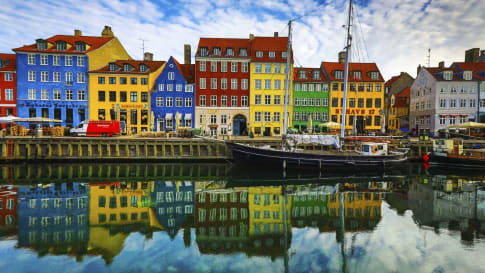
13 days
Jun, SepScandinavia tours for mature travellers
Visiting Denmark, Norway
Uncover on a small group tour for couples and solo travellers, a Viking past and view of the world’s biggest fjords on this journey through Scandinavia. In low-lying Denmark our small group journey takes us to visit the Zeeland, the sea land, and our program includes the vibrant capital of Copenhagen. In Norway we travel through endless forests, skirting great fjords to Bergen.
From A$14,995 AUD
View Tour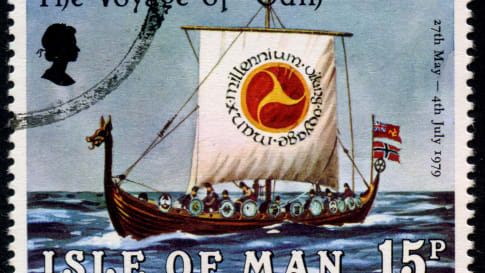
28 days
Jun, Sep, May, AugVikings in Britain; small group tour
Visiting England, Ireland
Vikings in Britain, escorted educational small group tour for senior couples and mature solo travellers who for 27 days explore Ireland, the isle of Man, Scotland and England and the viking history.
From A$20,385 AUD
View Tour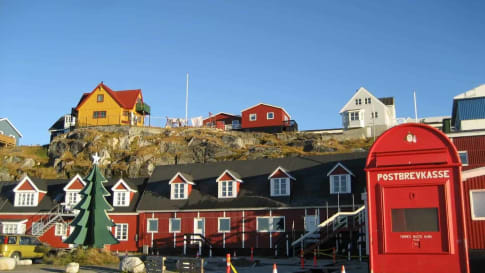
4 days
Sep, MayDiscover Greenland | Small Group Tour for Seniors
Visiting Greenland
Greenland is the largest island in the world, the majority of it lies above the Arctic Circle, and it is part of Denmark. Few places are quite so difficult to reach, we fly from Reykjavik to Nuuk. During this small group tour we have ensured that our travellers gets to this conversation-stopping land and, while we are there we obtain the most comprehensive overview of this vast landmass. We visit during the summer, experiencing the burst of seasonal flora, which caused the early voyagers to name it Greenland.
From A$6,450 AUD
View Tour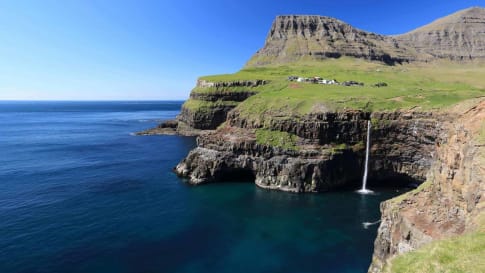
5 days
Apr, SepFaroe Islands Tour
Visiting Denmark
Few European tour companies offer small group journeys to the Faroe Islands. This five-day small group tour designed for mature couples and solo travellers. Local guides take you on trips off the beaten path to visit some of the islands' most stunning sights and to explore the capital of Tórshavn.
From A$7,250 AUD
View Tour
17 days
May, SepIceland cultural and wilderness small group tour
Visiting Iceland
Our escorted tour gives guests an insight into the history of this Icelandic nation. Travelling as a small group, our daily itineraries explore the Jokulsarlon Glacier Lagoon and others, national parks and majestic waterfalls as we learn about Iceland’s natural heritage and its Viking past from experienced local guides. There is a single supplement for solo travellers.
From A$18,995 AUD
View TourRelated Articles

Sami culture within the Vikings
Article about the Sami culture of the Arctic circle for small group educational tours for senior couples and mature single travellers interested in learning about the Vikings and their journeys into the Atlantic and south across Russia.

Sami People of the Arctic
The Sámi people are the only indigenous people of the European Union and are one of the oldest living cultures of our planet. Article for senior couples and mature single travellers curious about the Samii people and Viking culture that stretches across the Faroe Islands, Norway, Sweden and Finland on a small group educational tour.
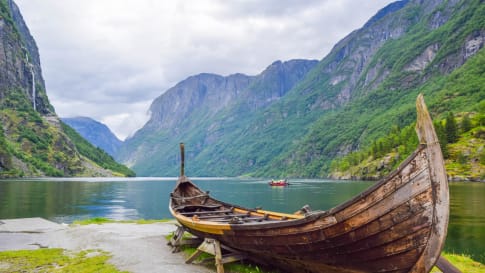
The Vikings
Vikings explored, pillaged, settled and traded their way in 300 years across the North Atlantic in the Longships to Iceland and Greenland or south through Europe/Russia to Istanbul and Persia. Learn more on a small group educational tour for senior couples and mature solo travellers interested in Viking history.
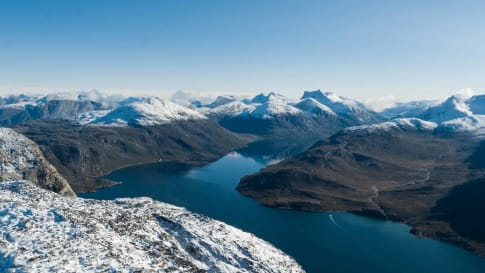
Viking History of Greenland
The Vikings explored the Arctic circle for 5 centuries reaching Greenland as well as North America. Learn about the history of the Vikings before enjoying a small group tour for senior couples and mature solo travellers.
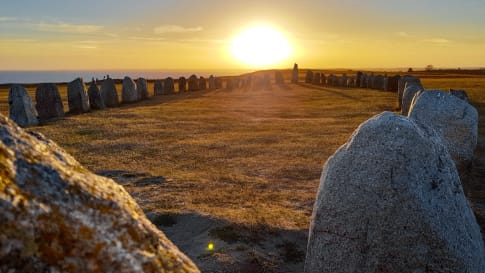
Vikings-explorers, raiders, traders
Article introducing Vikings and Outhere the explorer. Learn more on a small group educational tour for senior couples and mature solo travelers going to Iceland, Greenland, the Arctic circle or the Orkney islands.


